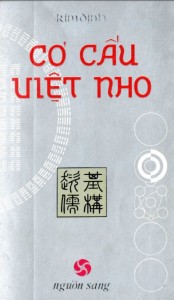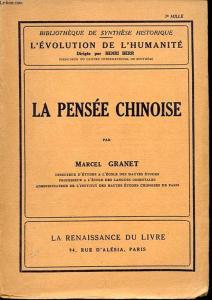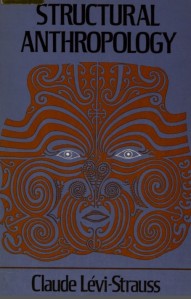I’m spending the summer reading the writings of Kim Định, a Catholic priest, philosopher and historian who wrote extensively in the 1960s and early 1970s in South Vietnam. In reading what he wrote, it has not taken long to conclude that Kim Định was by far the boldest and most imaginative historian that Vietnam has ever known.
Simply put, Kim Định was a genius. However, as far as I can tell, no one has been able to see the genius in what he did, but at the same time, like many people of genius, he also pushed his ideas too far.
The result is that many people today are either unaware of who Kim Định was or dismiss his scholarship. This, I would argue is a tremendous mistake.
Let me explain why I think this way.
Before reading his writings, I had only heard of Kim Định and had only read what others have written about him. From this information the image I had created of Kim Định was of an ultra-nationalist who came up with a crazy idea that the Confucian classics (Ngũ Kinh) were ultimately the creations of the Việt, and that as a result, essentially everything that we now think of as “Chinese” culture was actually originally “Việt” culture.
It is true that Kim Định ultimately made an argument like this. However, the intellectual path that led him to this conclusion was one that passed through some of the greatest scholarly ideas of the twentieth century, and this is why I would say that Kim Định is arguably the most important Vietnamese historian of all times (not “the best” but “the most important”).
Kim Định’s intellectual journey led him through the works of two eminent French scholars, Marcel Granet and Claude Lévi-Strauss.
Marcel Granet was both a Sinologist and a sociologist. He was one of the first scholars to seek to find sociological explanations for what he found in classical Chinese texts. In the process, he revolutionized how people (both inside and outside of China) viewed Chinese antiquity.
Most famously, Granet reinterpreted the Classic of Poetry (Shijing 詩經). For centuries scholars in China had interpreted the odes in this text in moral terms. Granet, however, saw them as the products of local rituals and festivals that had nothing to do with the moral interpretations of the scholarly tradition in China.
Perhaps more important for Kim Định’s work, however, was Granet’s La pensée Chinoise (Chinese Thought). In this dense and erudite work, what Granet sought to demonstrate was that concepts in ancient Chinese texts such as the dualism of yin and yang (âm duong), and the numerology of the five phases (ngũ hạnh), etc. were not just numerical concepts but were “emblems” (or what structuralists would later term “signs”) for societal configurations, and that if we look at phenomena like kinship and marriage we can see evidence of these concepts in the way those phenomena were arranged and performed.
While Granet’s work as a Sinologist came to be criticized by scholars like Bernhard Karlgren for not differentiating between texts from different periods, his work as a social scientist influenced the work of scholars like Claude Lévi-Strauss, the main figure in the field of structural anthropology.
The ideas of Lévi-Strauss emerged in opposition to the ideas of scholars like Bronisław Malinowski. Malinowski argued that we can understand societies by observing them and interpreting what we see.
Lévi-Strauss argued, on the other hand, that what we see in societies across the world is different. If, however, we move below the surface of what we see and seek to understand the “structure” of ideas that informs what people do, then we can obtain a different understanding, and can ultimately come to see that there are commonalties across the globe.
When Kim Định read the writings of Claude Lévi-Strauss in the 1960s he felt that Marcel Granet had already revealed what that “structure” below the surface was – it was yin and yang (âm duong), and the five phases (ngũ hành), etc.
What is more, he felt that all of this was “Việt.” It was not something “Chinese” that was later “imported” into Vietnam. This is what his scholarship sought to demonstrate.
So why is Kim Định so important? First of all, he is the only historian in modern Vietnamese history, that I know of, who was truly multi-disciplinary. The idea that scholarship needs to be multi-disciplinary is one that gets mentioned a great deal, but to be multi-disciplinary means that one must know the most “up-to-date” information in various fields. This is something that one does not see in Vietnamese scholarship. Instead, many scholars simply “select” information from different fields to fit an idea (and usually a nationalist idea) that they already have.
Kim Định, on the other hand, did know the most up-to-date scholarship in various fields. He understood Saussure (linguistics), Lévi-Strauss (anthropology), Granet, Creel, Needham (all in Sinology), Foucault (philosophy), etc. And he built his own ideas on the ideas of these other scholars. That is what it means to be truly multi-disciplinary.
What was the problem with Kim Định’s writings? It was the same as the problem with Marcel Granet’s scholarship. Kim Định did not differentiate between texts. To him, what was written in Sima Qian’s Historical Records or the Classic of Poetry (both from the BC period) was the same as what was written in the fifteenth-century Lĩnh Nam chích quái, etc. The information in all of these texts could be used to show the existence of a “structure” of meaning below these texts. That is problematic.
Anthropologists like Lévi-Strauss, however, had built their ideas by examining contemporary (“primitive”) societies, where the information that they had did not come from different time periods. This, I would argue, made such arguments more persuasive.
Scholarship moves forward when scholars use theory to make bold claims. Such claims are sometimes “too” bold, which leads other scholars to challenge those claims and establish a more reasonable understanding. The result, however, is that scholarship moves forward.
In other words, it is fine to have scholars who make bold claims (like Edward Said, Benedict Anderson, James Scott, etc.), because it leads other scholars to challenge and correct those claims. For that to happen, however, the scholars who challenge the bold claim have to be as theoretically informed as the scholar who made the initial claim.
This is what has never happened with Kim Định. Kim Định made some bold claims in the 1960s and early 1970s that moved our understanding of Vietnamese history (too far) forward, but since that time there has been no one who possesses the same knowledge of theory as Kim Định did, so there has not been a productive challenge to, or correction of, his ideas.
The result is that Kim Định has been either ignored or ridiculed, or his ideas have been misunderstood.
This is a shame, because Kim Định is, I would argue, the only Vietnamese historian in modern times who has truly come up with a novel interpretation of early Việt(namese) history.
To dismiss his ideas, one must first be able to engage with his ideas. To date, no one has done that. Once someone does, s/he will find that there is probably something in his ideas that is insightful (just as scholars still find insightful points in the works of Marcel Granet), and that is what will lead historical scholarship forward. Until that time. . .






What do you think about Nguyen Phuc Anh’s take on Kim Dinh?
Thanks,
Cam
Reblogged this on Site Title.